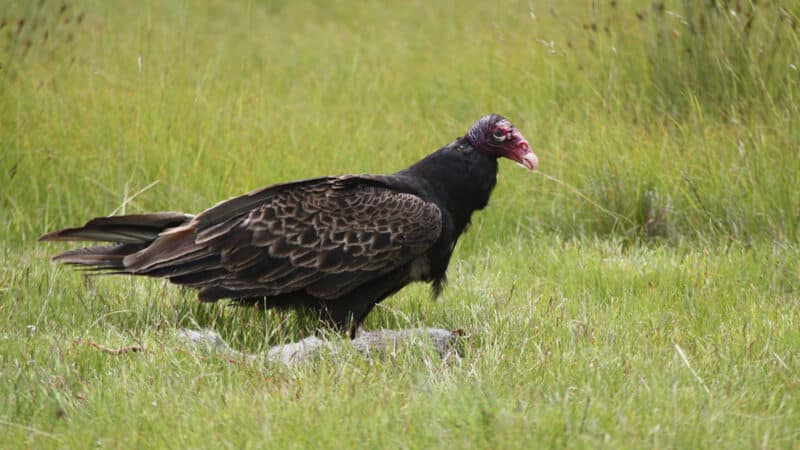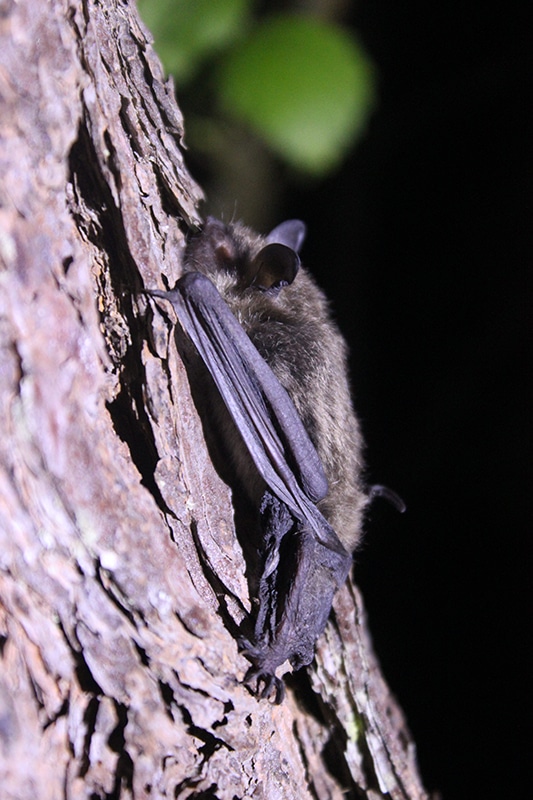by Dr. Sarah Treanor Bois, PhD
Director of Reseach & Education at the Linda Loring Nature Foundation
Now that it is officially fall on Nantucket, we can start celebrating the “spooky season.” As I am writing this, fall has just begun. But autumn moves quickly on Nantucket. Throughout September we feel the “Second Summer” vibes. Early October can even have mild days. But then suddenly, the winds pick up, the rain falls, and decorative gourd season descends.
In celebration of fall, I thought we would honor the nature of some creatures who have come to represent all things spooky. One of my favorite children’s books is Vulture Verses: Love Poems for the Unloved by Diane Lang and illustrated by Lauren Gallegos. There are 13 poems, each celebrating a different creature who is often much maligned or misunderstood. Black widow spiders, skunks, mosquitos… the poems are charming and they highlight how each species fits into the ecosystem. In that spirit, I thought I would highlight some of Nantucket’s sometimes maligned native species. Each is part of our Nantucket ecosystem, native to our island. So, let’s give some love to these underappreciated species.
Turkey Vultures are one of my favorite animals, so they hold a special place in my heart. They are relatively new residents to Nantucket. Do they count as washashores? Warmer winters and changing climate has brought their populations further north. Where they were once infrequent visitors, now they are resident birds breeding on-island.
Ungainly on the ground, they are graceful on the wing. Turkey vutures can frequently be seen soaring high above, wings outstretched, rarely beating their wings as they keep an eye to the ground for carrion. Yes, Turkey Vultures eat dead things: freshly dead animals such as rabbits, deer, other birds, and even fish. Their palate does not discriminate by species. Because of this, Turkey Vultures are performing an important ecosystem service: they are a natural clean-up crew. Imagine what would happen throughout Nantucket’s conservation properties and roadways if no animal ever made use of these deceased creatures. Their nakedeseach & Education at the Linda Loring Nature Foundation red heads and “beady eyes” are often deemed “ugly.” In this case, however, structure suits function: a head free of feathers allows this bird to feed on carrion without pesky feathers getting in the way or becoming contaminated.
So, while they may be unattractive to some and get a bad reputation, Turkey Vultures are quite gentle creatures that await the death of another creature before making a meal. Next time we see a Turkey Vulture perched on a branch or soaring in the sky, let’s take a moment to thank them for their service to the island.
Nantucket boasts six species of snakes on-island. Each species of snake occupies a different, but sometimes overlapping habitat niche. Even though many people are somewhat fearful of snakes, there is nothing to fear on Nantucket. None of our island snakes are venomous, and they really don’t care to be around people if they can help it. Today, I’ll focus on one lovely reptile—the Eastern Garter Snake, which is the most common snake on Nantucket. You can generally recognize this snake by its distinct pattern of yellow stripes on a black or brown background. They are found in a variety of habitats and are especially prevalent in many Nantucket gardens. Their main prey items consist of earthworks, insects, and salamanders, though, larger garter snakes can sometimes eat small mammals. Garter snakes are low-level predators, feeding on many small animals and in turn being eaten by other predators higher in the food web. On Nantucket, their predators are primarily birds of prey like harriers and red-tailed hawks.
In 2014, researchers published a study comparing the color patterns of garter snakes on Nantucket, Tuckernuck, and mainland Massachusetts. They found that Nantucket garter snakes had significantly different patterns than their mainland counterparts. One possibility for this variation is that different patterns arose in response to the lack of mammalian predators and the vegetation found on Nantucket. So not only are Garter Snakes an important part of the island ecosystem, they are unique from other Garter Snakes anywhere else!
The work of the Nantucket Conservation Foundation with native bats, especially the endangered Northern Long-Eared Bat, has already moved a lot of people to love more than fear them. But I think it’s worth noting some additional reasons to appreciate these nocturnal flyers. In general, bats eat lots of insects. According to the USDA, bats eat nearly one thousand insects per hour, including species we consider “pest” species like mosquitos. They help reduce crop damage from pests without the use of harsh chemicals and save billions of dollars annually in pest control for US agriculture. Thank you, bats! Like all bat species, the Northern Long-eared bats play a critical role in ecosystems.
Nantucket has become a special refugia for our Northern Long-Eared Bats, which are now federally endangered. Hanging out in caves on the mainland, the Long-Eared Bats here love crawl spaces and cedar shingles. Well, we have plenty of those! Researchers think that the habitats here help decrease the transmission of white nose syndrome, the fungal pathogen which is the root cause of population decline elsewhere. Let’s appreciate the bats and let them be on Nantucket where, like so many, they have found a refugia from tough times on the mainland.
Sharks have had a bad wrap ever since Jaws came out. That movie was successful in launching a “scary nature creature” industry, but it also succeeded in striking fear of the ocean and fear of sharks in particular. Shark populations in general, but certainly Great Whites, declined significantly afterwards due to overfishing and decline in prey numbers. More recent conservation efforts and protections have helped many shark species rebound.
As a top predator, the Great White Shark plays a very important role in maintaining balance in its ecosystem. If sharks were to be removed from their habitat, prey species’ numbers would rise and competition for food would increase to an unsustainable level. It’s important to remember that predators follow the food. Great Whites, for example, are here now following the food. Many conservation efforts for marine mammals (including seals) and changes in the fishery for other species, like the Atlantic menhaden, mean more fish and prey species. Baitfish are moving in, followed by bigger fish (stripers, porgies, menhaden, etc.), then the bigger predators arrive. More sharks in the surf are a good sign to anglers that the fish are around. It may be tricky to land a fish when there’s a shark or a seal also fishing for a meal, but the fish are there. To see lots of sharks means you have a robust ecosystem that can support them.
And really, everyone likes sharks. How many of you know all the words to Baby Shark? And are you humming it now? And remember that you have a 1 in 4,332,817 chance of dying from a shark bite. That’s more than lightning, fireworks, or a space accident.
Ticks…well, I can’t really think of a good reason to like ticks. That one we will just chalk up to the stuff of nightmares during this spooky season. Now that’s a good idea for a scary costume!
Can you think of any misunderstood species on Nantucket?





